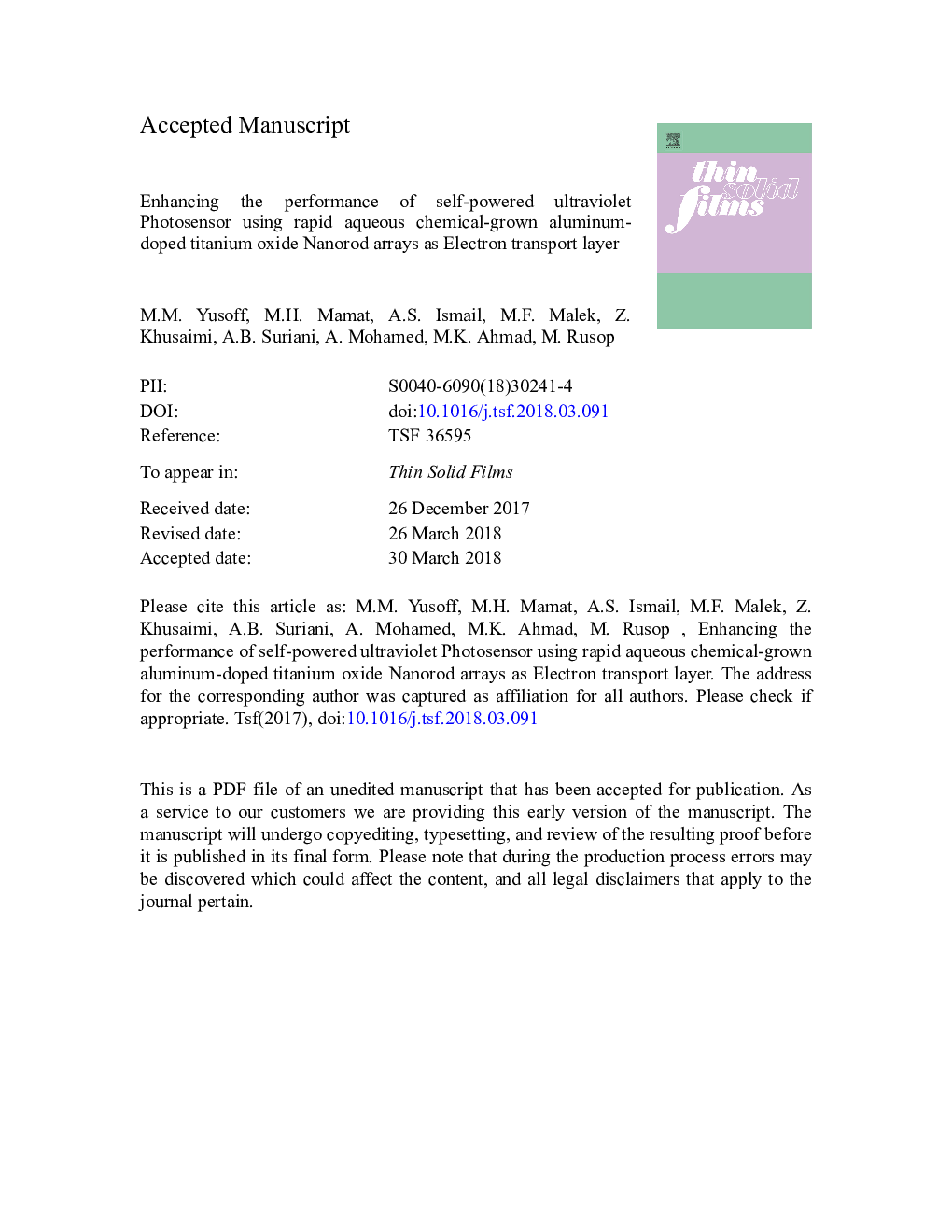| Article ID | Journal | Published Year | Pages | File Type |
|---|---|---|---|---|
| 8032657 | Thin Solid Films | 2018 | 58 Pages |
Abstract
Aluminum (Al)-doped titanium dioxide nanorod arrays (ATNs) were grown on fluorine-doped tin oxide-coated glass at different Al atomic concentrations ranging from 1â¯at.% to 5â¯at.% in a Schott bottle through single-step aqueous chemical growth for self-powered photoelectrochemical cell-type ultraviolet (UV) photosensor applications. X-ray diffraction patterns showed that the grown ATNs exhibited a crystalline rutile structure. The ATNs showed smaller crystallite size and average nanorod diameter and length compared with the undoped sample. The photocurrent measured from the fabricated UV photosensors improved to some extent with increasing Al-dopant concentration. Samples with 2â¯at.% Al showed the maximum photocurrent of 108.87â¯Î¼A/cm2 at 0â¯V bias under UV irradiation (365â¯nm, 750â¯Î¼W/cm2). The results show that high-performance UV photosensors can be fabricated and enhanced using ATNs easily prepared in a glass container.
Related Topics
Physical Sciences and Engineering
Materials Science
Nanotechnology
Authors
M.M. Yusoff, M.H. Mamat, A.S. Ismail, M.F. Malek, Z. Khusaimi, A.B. Suriani, A. Mohamed, M.K. Ahmad, M. Rusop,
